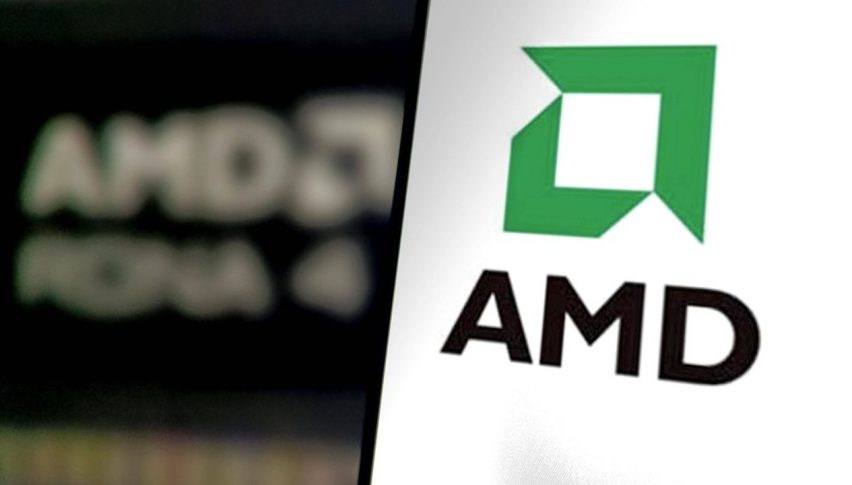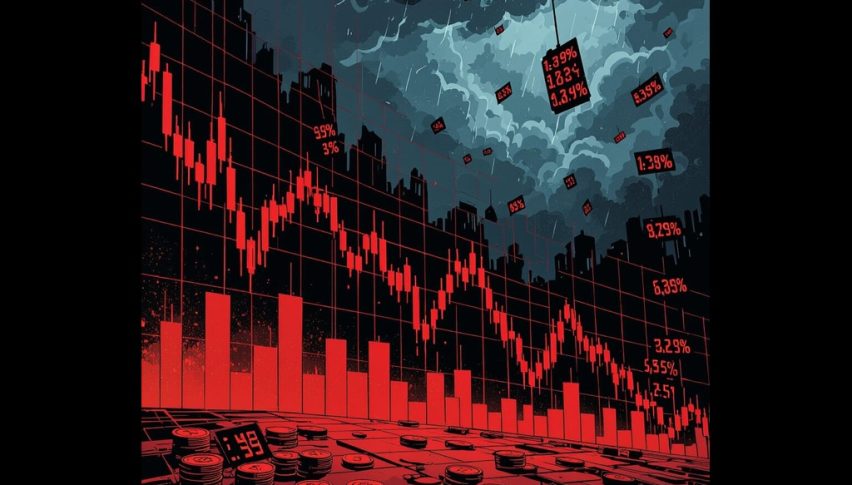AMD Stock Shows Weakness After the Record Surge, Ignoring the Tech Bounce
AMD's development has suddenly stalled after a fervent ascent propelled by its historic collaboration with OpenAI. This is a result of...

Quick overview
- AMD's partnership with OpenAI initially drove its stock up over 46%, positioning the company as a key player in AI computing.
- Investor enthusiasm waned due to tariff concerns and increased competition in the AI chip market, leading to a sharp decline in AMD's stock price.
- Leadership changes at AMD have added to investor uncertainty, raising questions about the company's internal stability during a critical growth phase.
- Despite strong fundamentals, AMD faces challenges from geopolitical risks and fierce competition, making its future market position uncertain.
AMD’s development has suddenly stalled after a fervent ascent propelled by its historic collaboration with OpenAI. This is a result of investors’ present worries about tariff headlines, fierce competition, and leadership changes.
OpenAI Partnership Sparks Early-Week Excitement
Advanced Micro Devices (NASDAQ: AMD) ignited a market frenzy earlier this week after unveiling a groundbreaking partnership with OpenAI. The agreement gives OpenAI a 10% equity stake in AMD in exchange for access to its Instinct AI processors, positioning AMD as a central player in the global race for artificial intelligence computing power.
The deal aims to significantly expand OpenAI’s computing capabilities. President Greg Brockman confirmed that OpenAI plans to deploy 6 gigawatts of AMD’s advanced processors over the next few years — with 1 gigawatt already scheduled for initial rollout. This partnership is designed to push past ChatGPT’s current infrastructure limits and accelerate the development of next-generation AI tools and models.
The announcement sent AMD shares soaring more than 46% in just four trading days, jumping from $165 to an all-time high of $240 by Thursday. OpenAI also agreed to acquire approximately 160 million AMD shares, further strengthening the collaboration and boosting investor faith in AMD’s role within the booming AI hardware ecosystem.
Tariff Concerns Snap Rally Momentum
The optimism faded quickly by Friday when President Donald Trump hinted at potential new tariffs on Chinese imports, rekindling fears of a renewed U.S.–China trade war. The news rattled the broader tech sector, triggering a wave of selling across semiconductor stocks with China exposure.
AMD, which had been the week’s standout performer, fell sharply — dropping more than 7% to $213 by market close. The chip industry’s heavy dependence on global supply chains made it especially vulnerable to policy shocks.
By Monday, attempts to stabilize the stock saw AMD briefly climb back to $224, but the rebound lacked conviction, and selling pressure quickly returned.
AMD Chart Daily – Selling Pressure Returns at These Levels
Technically, analysts note the stock now faces strong resistance at $240, with near-term support around $200. Should macroeconomic headwinds persist, AMD could retest its early-October gap near $170, a level that would represent a full retracement of last week’s explosive move.
Competition Heats Up in the AI Chip Race
While the OpenAI deal bolstered AMD’s strategic positioning, competition in the AI semiconductor market continues to escalate.
Broadcom recently revealed it had secured its fourth major client for its proprietary AI chip platform, highlighting growing fragmentation in the high-performance computing space. Meanwhile, Alibaba has accelerated efforts to design its own AI chips, mirroring a trend among global tech giants seeking to reduce reliance on third-party hardware suppliers like AMD and Nvidia.
Adding to the pressure, Intel and Nvidia announced a $5 billion partnership to co-develop next-generation AI processors for data centers — a potential challenge to AMD’s ambition to dominate the AI accelerator market.
Analysts warn that while AMD’s Instinct line remains highly competitive, the industry is becoming increasingly crowded. Success in the coming years will hinge not just on chip performance but also on scale, ecosystem integration, and pricing efficiency — areas where larger rivals maintain structural advantages.
Leadership Change Adds Uncertainty
Investor nerves were further tested when Philip Carter, AMD’s Chief Accounting Officer and Corporate Vice President, announced his departure to assume a CFO role elsewhere. Though the exit appeared amicable, the timing raised questions among shareholders already on edge about execution risk and internal stability.
Leadership transitions at critical growth phases often introduce uncertainty, especially as AMD juggles rapid expansion, complex supply logistics, and an increasingly competitive AI market.
Market analysts remain generally positive on AMD’s fundamentals, citing strong AI exposure, resilient margins, and strategic partnerships. However, they caution that sentiment could remain fragile in the short term as the company navigates both macro headwinds and internal restructuring.
Outlook: Momentum Meets Reality
AMD’s recent journey captures the tension between AI-driven optimism and geopolitical reality. Its historic rally underscored Wall Street’s confidence in AMD’s role at the heart of the AI revolution — but the abrupt reversal highlights how quickly enthusiasm can fade in a market still sensitive to policy shifts and global supply risks.
With leadership turnover, fierce competition, and trade uncertainty all in play, AMD’s next few weeks will serve as a critical test of whether the company’s AI narrative can translate into sustained market leadership — or if investors were simply too early to price in perfection.
- Check out our free forex signals
- Follow the top economic events on FX Leaders economic calendar
- Trade better, discover more Forex Trading Strategies
- Open a FREE Trading Account



